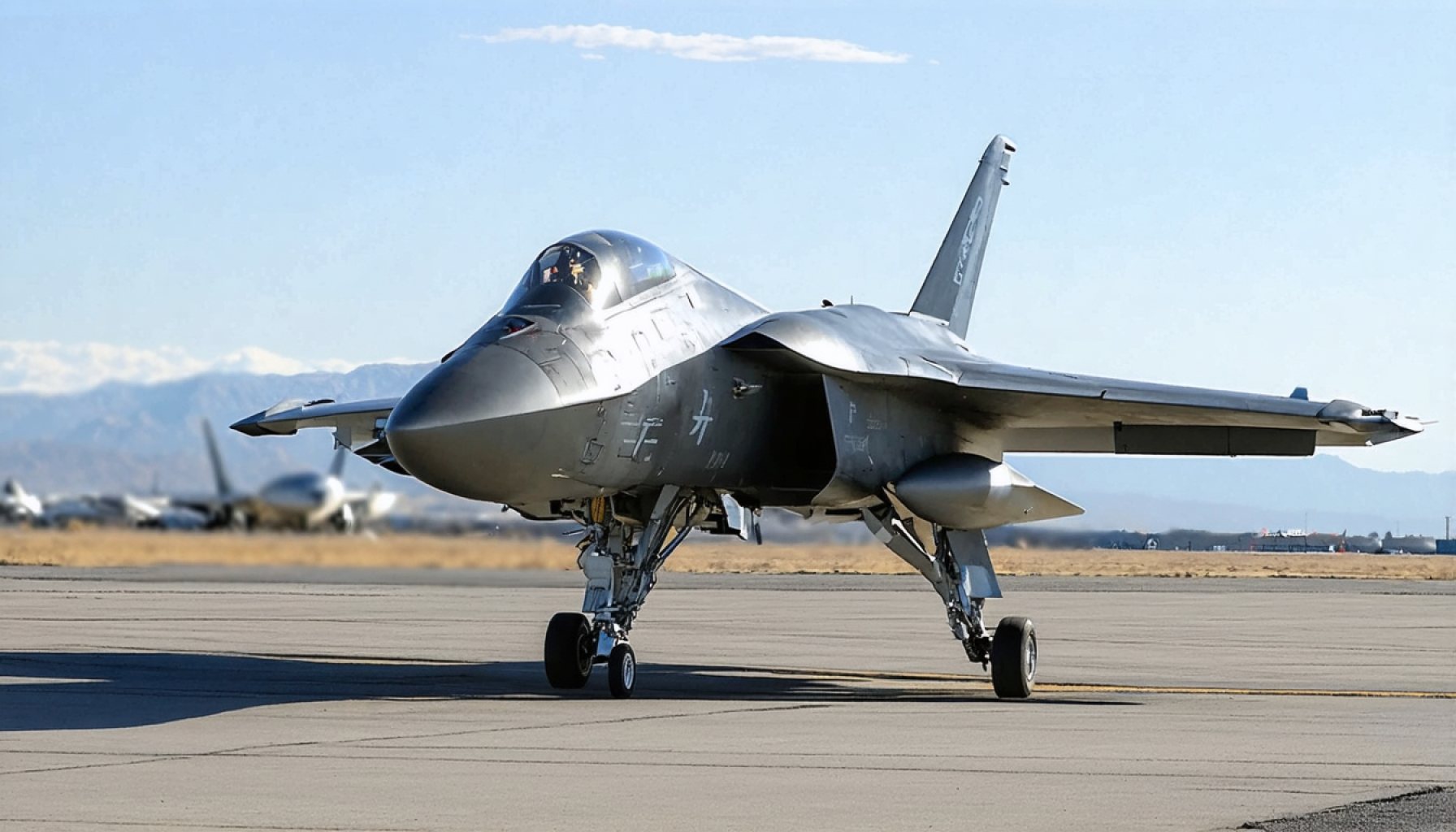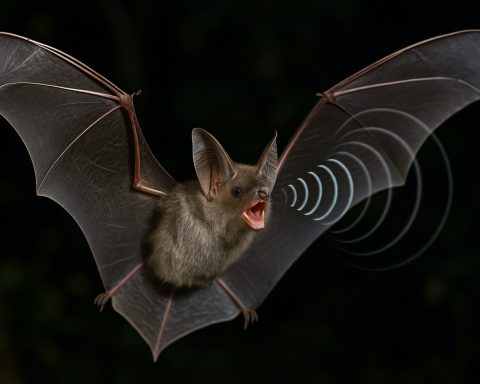- The F-47 marks the U.S. Air Force’s advancement into sixth-generation stealth technology.
- Its design may draw inspiration from the X-36 Tailless Fighter Agility Research Aircraft, known for agility without a traditional tail.
- Features like canard foreplanes, split ailerons, and digital fly-by-wire control are central to its maneuverability and stealth.
- Boeing’s expertise, shaped by projects like the Bird of Prey and Advanced Tactical Fighter programs, influences the F-47’s design.
- Thrust-vectoring engines and AI-driven systems may be employed to enhance stability in tailless design.
- The F-47 is a symbol of innovation, merging speed, stealth, and cutting-edge technology for future aerial combat.
The unveiling of Boeing’s F-47 as the U.S. Air Force’s sixth-generation stealth jet has ignited a firestorm of curiosity and speculation. Shrouded in mystery, the F-47’s design nods to a lineage of experimental aircraft that dared to abandon traditional tails, casting light on the possible silhouette of this state-of-the-art combat machine.
On the cutting edge of technology rests the craft’s rumored resemblance to the famed X-36 Tailless Fighter Agility Research Aircraft. Developed by the McDonnell Douglas Phantom Works in conjunction with NASA in the 1990s, the X-36 was a trailblazer—a pint-sized marvel designed to explore the fringes of fighter agility without the constraints of a tail. Its design boasted canard foreplanes, and split ailerons, and managed stability through digital fly-by-wire control, proving that liberation from traditional designs could breed unparalleled dexterity.
The X-36’s dimensions were humble, a mere 19 feet in length, equipped with a Williams International F112 turbofan engine. Yet, this miniature titan accomplished 31 test flights, none crewed, but all controlled remotely, providing invaluable insights into the viability of tailless aviation. The agility tests conducted revealed that the X-36 was not just stable; it danced through the sky with surprising grace, maneuvering adeptly across varied speed thresholds. This characteristic, essential for stealth, allowed for low observability with minimal radar cross-section, a crucible for contemporary designs such as the F-47.
Boeing’s past, steeped in its work on experimental aircraft like the Bird of Prey—another tailless wonder—and concepts from the Advanced Tactical Fighter programs, reverberates through the F-47’s whispered design elements. Thrust-vectoring engines are a possibility, potentially coupled with modern AI-driven control systems, posited to overcome the inherent instabilities of tailless architecture.
While the final look of the F-47 remains obscured, existing renderings coupled with its canard-configured silhouette hint at the bold direction this aircraft might take. Similarities in the F-47’s broad, radar-accommodating nose and bubble canopy evoke an evolution from the X-36’s theoretical exercises toward real-world application.
Perhaps the most telling aspect of Boeing’s odyssey into tailless innovation is how it illustrates the relentless pursuit of blending stealth, agility, and technology. Lessons from these experimental flights whisper to the world a simple yet profound revelation: the future of aerial combat hinges on the marriage of speed and invisibility, a symphony of design embracing both the engine’s roar and the whisper of the air around it.
As Boeing prepares to unfurl the F-47 into the skies, it carries with it a legacy of experimental prowess and a promise of technological mastery. Through this innovation, the aircraft not only echoes the past but thrusts it forward into an era where every silhouette on the radar flickers with the essence of unseen power.
Unveiling the Future of Air Combat: Boeing’s F-47 Stealth Jet
Introduction
The emergence of Boeing’s F-47 as the U.S. Air Force’s sixth-generation stealth jet marks a groundbreaking advancement in aerial technology. While details about the F-47 remain speculative, its anticipated design and capabilities suggest it is set to redefine aerial combat. This article delves into uncharted aspects of the F-47, exploring its potential technological advancements, real-world applications, and the implications for military aviation.
Technological Innovations and Features
1. Advanced Materials and Construction
– The F-47 is likely to employ cutting-edge composite materials that enhance durability while reducing weight. These materials contribute to the aircraft’s stealth capabilities by minimizing radar cross-section.
2. AI-Driven Control Systems
– Leveraging artificial intelligence (AI) can optimize flight control systems, enhancing stability and performance. AI algorithms may offer predictive maintenance features, further reducing downtime and operational costs.
3. Thrust Vectoring Explained
– Expected to feature thrust-vectoring engines, the F-47 will have augmented maneuverability, allowing rapid changes in direction and speed critical to modern combat scenarios.
4. Autonomous Flight Capabilities
– With advancements in autonomous technology, the F-47 might incorporate semi-autonomous or even fully autonomous flight modes, supporting pilot decision-making or conducting missions without human intervention.
Market Forecasts and Industry Trends
– Shift Towards Tailless Designs
– The tailless architecture explored in the F-47 reflects a broader industry trend towards designs that prioritize stealth and maneuverability.
– Investments in AI and Cybersecurity
– Increased investment is expected in AI development and cybersecurity, ensuring that high-tech jets like the F-47 are resilient against cyber threats.
Pros and Cons Overview
– Pros
– Enhanced stealth capabilities make the F-47 less detectable.
– Advanced maneuverability allows superior performance in complex combat environments.
– AI-driven systems may reduce human error and improve operational efficiency.
– Cons
– High development and production costs could impact defense budgets.
– Reliance on advanced technology necessitates robust cybersecurity measures to thwart hacking attempts.
Controversies and Limitations
– The potential for fully autonomous combat aircraft raises ethical and operational concerns. There are ongoing debates around the decision-making capabilities of autonomous systems, especially in life-or-death scenarios.
Actionable Recommendations
– Military Training Adaptations
– Train pilots on AI-integrated systems early to maximize the potential of these advanced platforms.
– Investment in Cyber Defense
– Nations and manufacturers should prioritize cybersecurity to protect new generations of aircraft from digital threats.
Conclusion
In embracing the fusion of stealth, agility, and cutting-edge technology, Boeing’s F-47 represents a substantial leap forward in aerial warfare technology. As it prepares to take flight, the F-47 not only encapsulates the legacy of past innovations but also opens a new chapter where unseen power and superior agility define the aerial battlefield.
For further insights into advancing aerospace technology, visit Boeing and explore related innovations and industry advancements.











